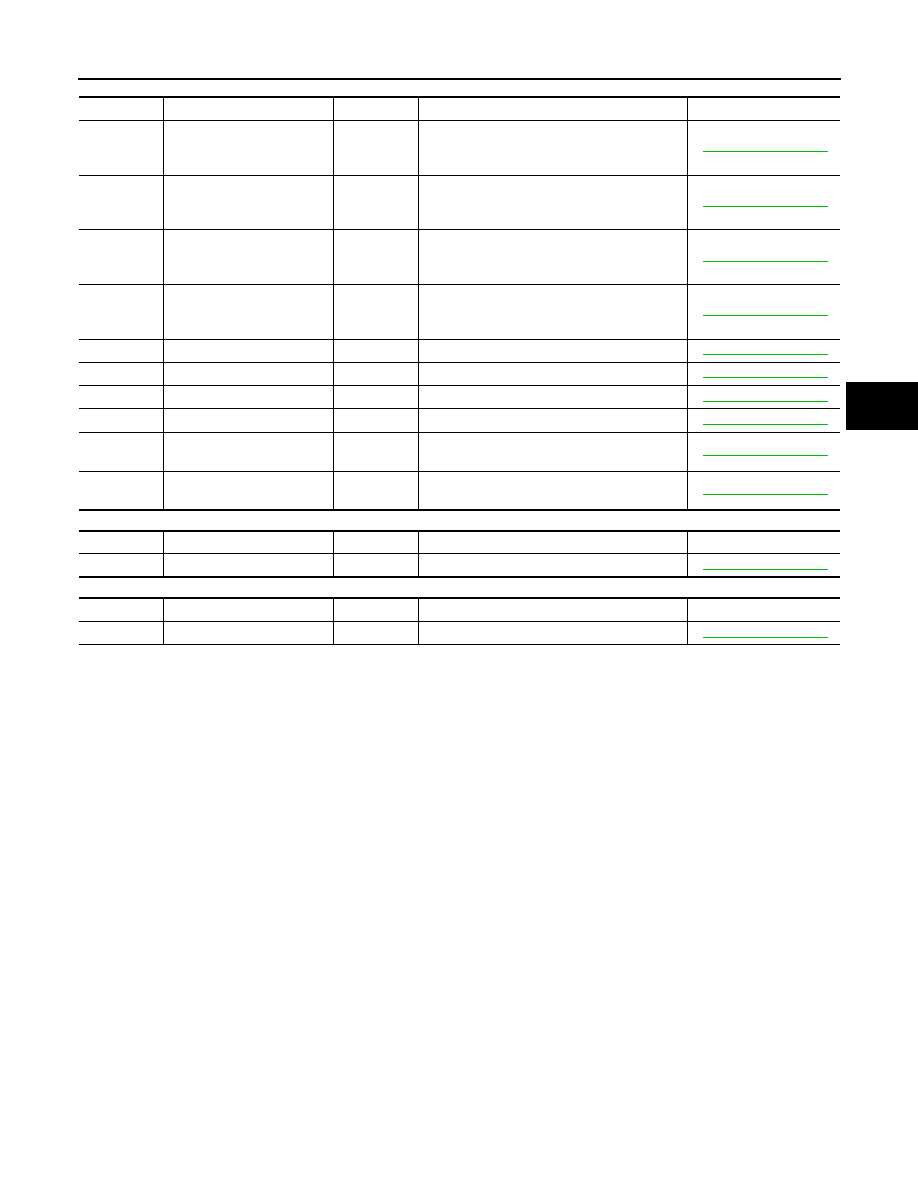Nissan Altima HL32 Hybrid. Manual - part 151

ABS ACTUATOR AND ELECTRIC UNIT (CONTROL UNIT)
BRC-169
< ECU DIAGNOSIS >
[VDC/TCS/ABS]
C
D
E
G
H
I
J
K
L
M
A
B
BRC
N
O
P
TEST MODE DTC of ABS:
TEST MODE DTC of VDC:
TEST MODE DTC of Electronically controlled Brake:
DTC code
Detection item
INF code
Trouble area
Reference page
C1271
FR SPD OUTPUT
—
1.
Front wheel sensor RH
2.
Snesor installation
3.
Wheel sensor rotor
C1272
FL SPD OUTPUT
—
1.
Front wheel sensor LH
2.
Snesor installation
3.
Wheel sensor rotor
C1273
RR SPD OUTPUT
—
1.
Rear wheel sensor RH
2.
Snesor installation
3.
Wheel sensor rotor
C1274
RL SPD OUTPUT
—
1.
Rear wheel sensor LH
2.
Snesor installation
3.
Wheel sensor rotor
C1275
FR SPD OUTPUT HI
—
Wheel sensor rotor
C1276
FL SPD OUTPUT HI
—
Wheel sensor rotor
C1277
RR SPD OUTPUT HI
—
Wheel sensor rotor
C1278
RL SPD OUTPUT HI
—
Wheel sensor rotor
C1279
G SEN OUTPUT
—
1.
Yaw rate/side/decel G sensor
2.
Sensor installation
C1281
MC SENSOR OUTPUT
—
1.
Stop lamp switch
2.
Master cylinder pressure sensor
DTC code
Detection item
INF code
Trouble area
Reference page
C0371
YAW SEN OUTPUT
—
Yaw rate/side/decel G sensor
DTC code
Detection item
INF code
Trouble area
Reference page
C1346
STROKE SEN CALIB
—
Brake stroke sensor